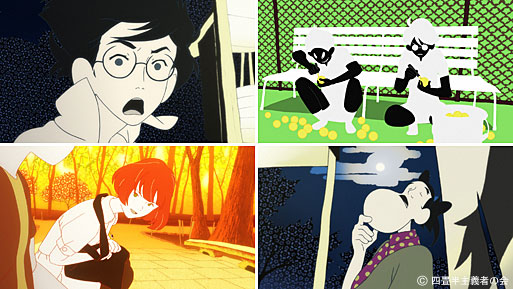Golden Time – This is a really interesting drama, where the main plots revolve around characters and character interactions and romance. I had low expectations when I started watching because the opening is really… setting you up for a different, terribler show. But the characters actually were well-rounded, interesting adults with interesting lives and semi-soap-opera problems, and I quickly got sucked into it. It’s still running, so I can’t give you any final comments, but so far it’s one of my favorite shows that’s running and definitely in the A range!
Log Horizon – I had low expectations for yet another show about how now an MMORPG is FOR REALZ. There was nothing especially interesting about the first few episodes, but I didn’t have issues with the treatment of the female lead, even though she’s lusted after by other characters, and there was something mildly interesting that kept me watching and I’m not sure what. And though slow to start, this show has become one of my favorites after it hit mid-season. There are super interesting world-building and setting things, character growing, learning about their new lives and how to deal with their situation that I think is crazy interesting and original. Haven’t finished, but so far, An A show!
Yowapeda: Yowamushi Pedal – This is a sports/guts show about an anime Otaku who just wants to make friends in high school, but turns out he has a talent for biking, thanks to his hoofing it to Akihabara every weekend. He ends up joining the ultra-competitive and impressive biking club, and ACTION! BIKING! RACES! GAINING SELF-ESTEEM THROUGH PHYSICAL ACCOMPLISHMENT. It’s super fun to watch and I <3 it. Hasn’t finished yet, but it’s a solid B+.
Valvrave the Liberator – I actually enjoyed this series. It has a plot that rushes forward and lots of action and plot-twists/turns. The characters have mostly differentiable personalities. It’s a fun action ride if that’s what you’re looking for. Unfortunately, it’s trying way to hard to be as interesting and awesome as Code Geass and kinda failing, plus the ending is less resolution and more deflation. It’s also really calling upon the tropes of the Mecha genre (which I do not like) and so at best I’d rate this anime a B-, maybe C+.















